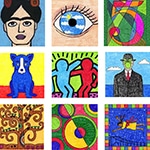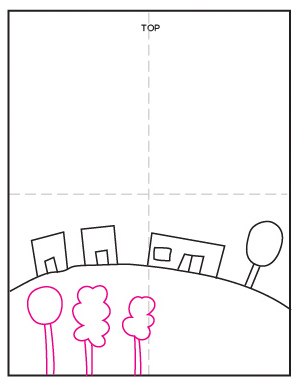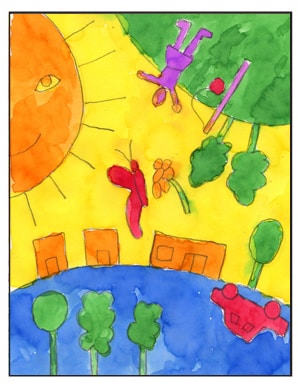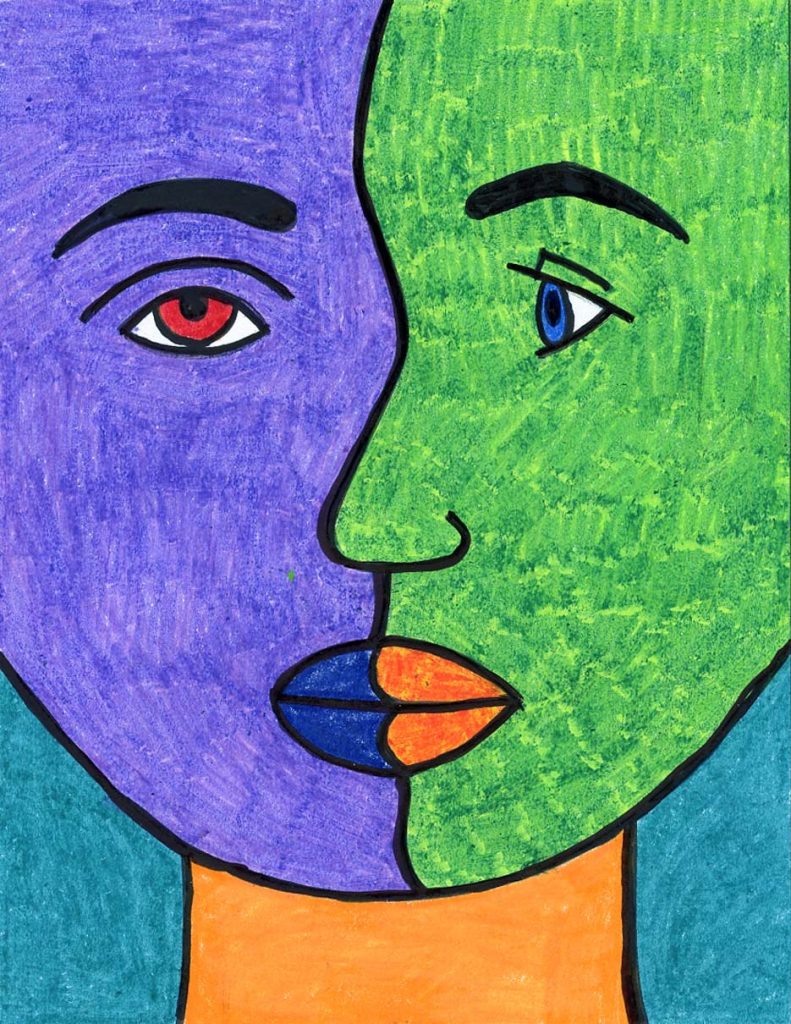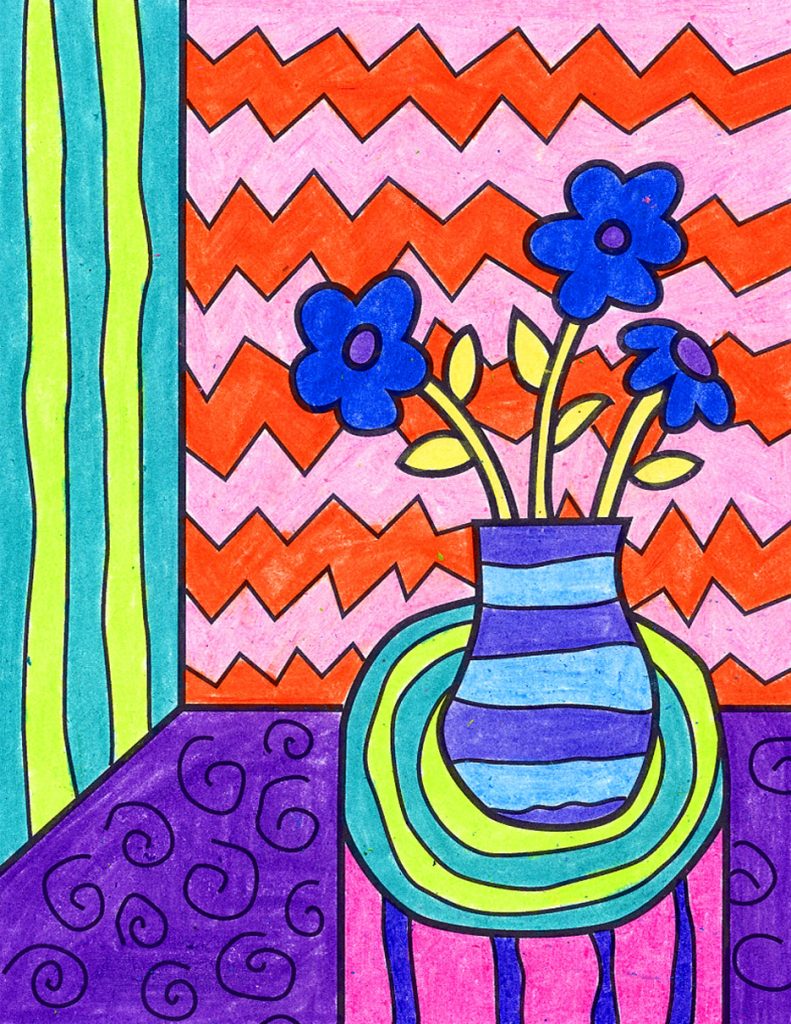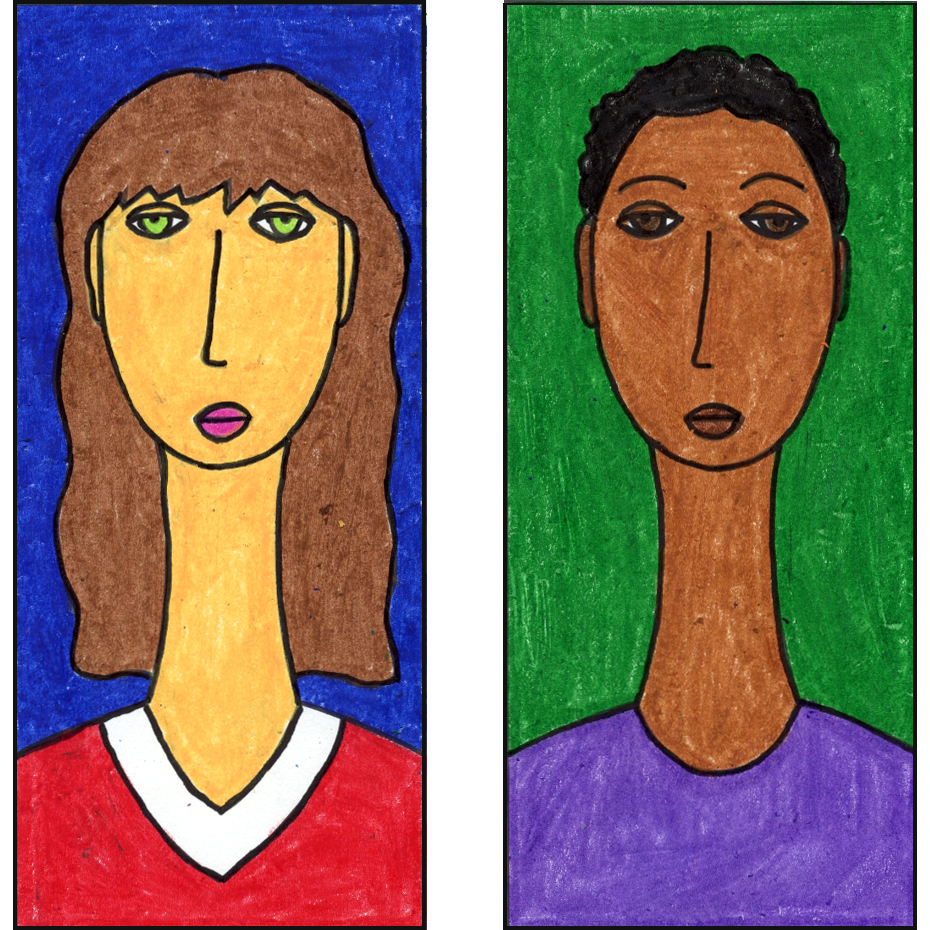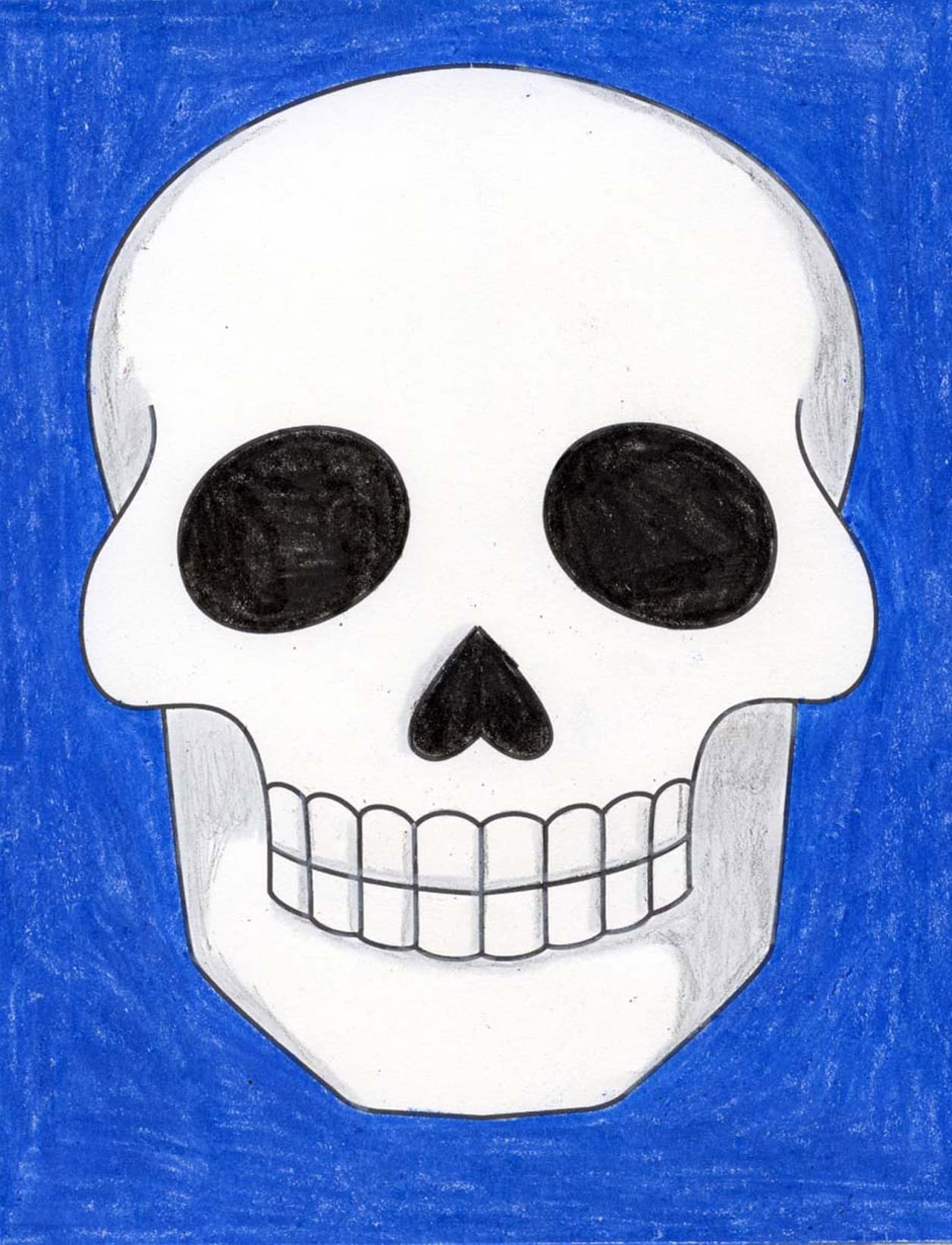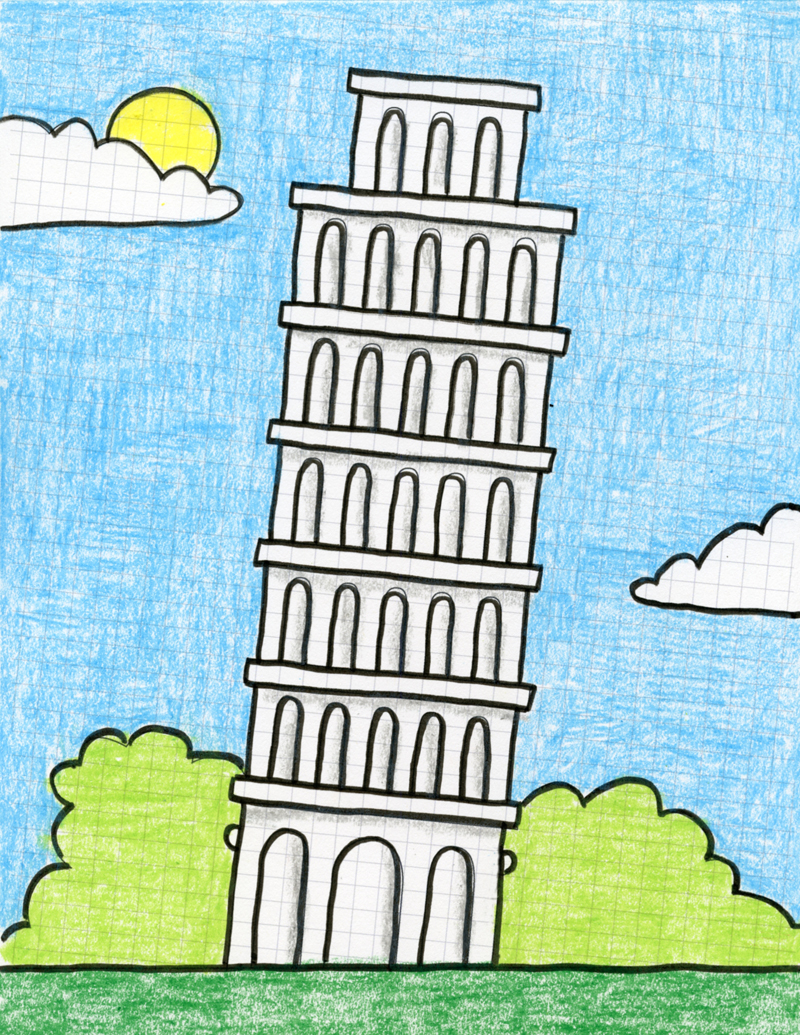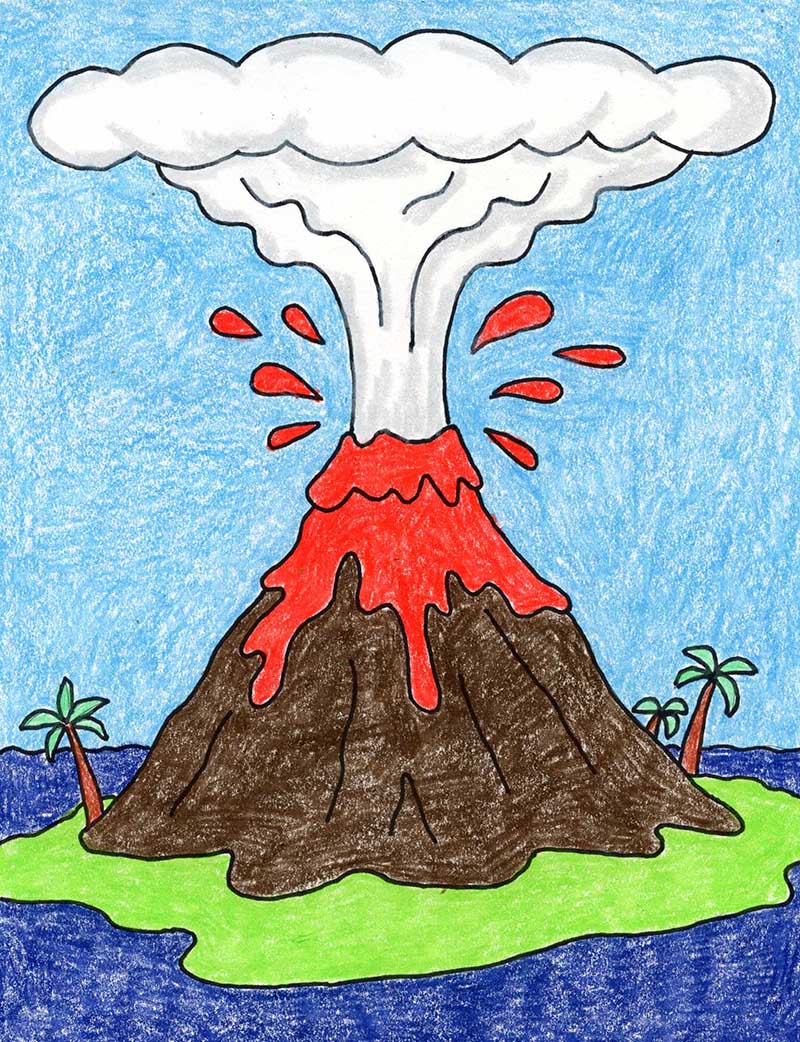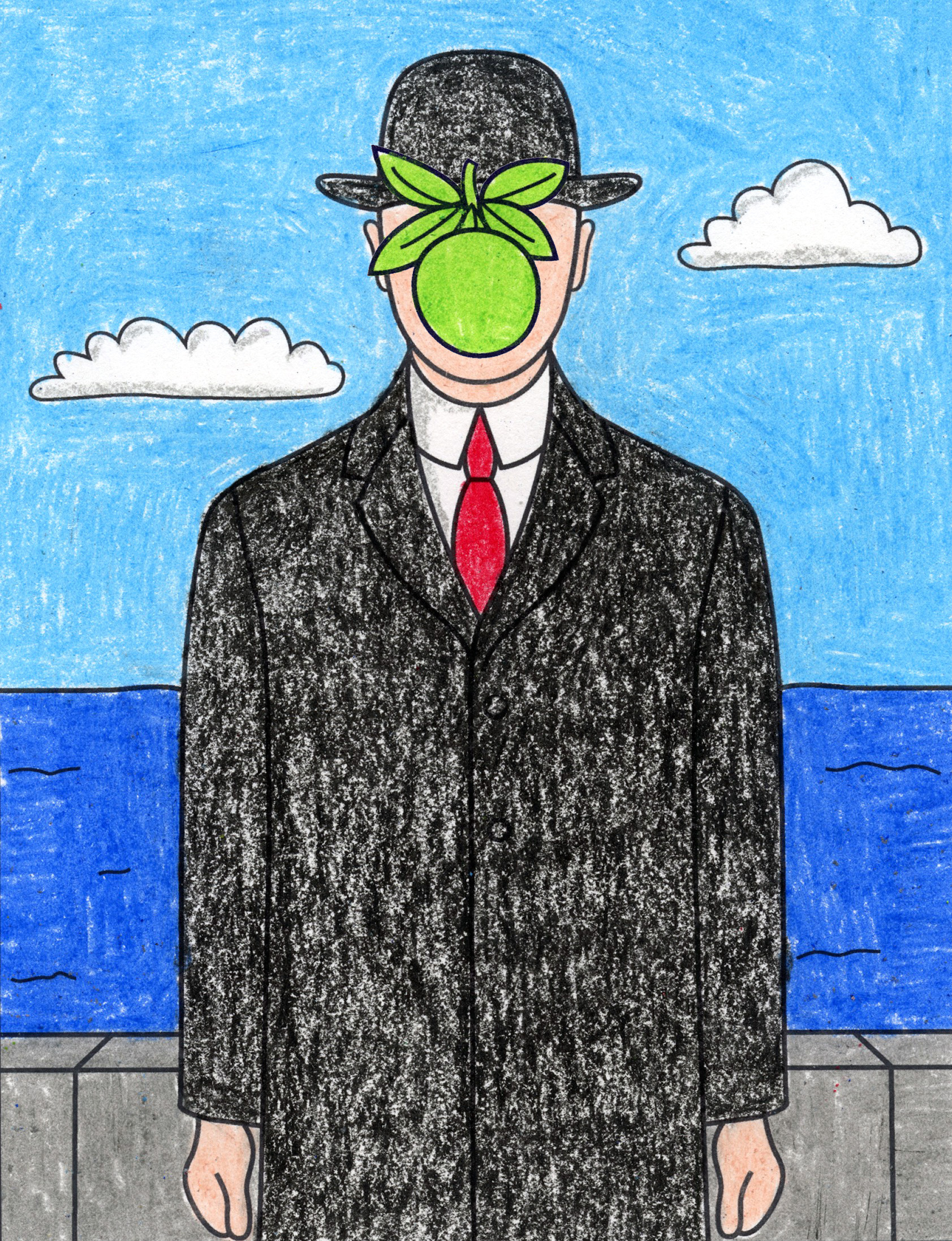Easy Marc Chagall Inspired Art Lesson for Kids
Below you’ll find an easy step-by-step lesson for a Chagall Art Project and a Chagall Coloring Page. Stop by and download yours.
Chagall Inspired Painting
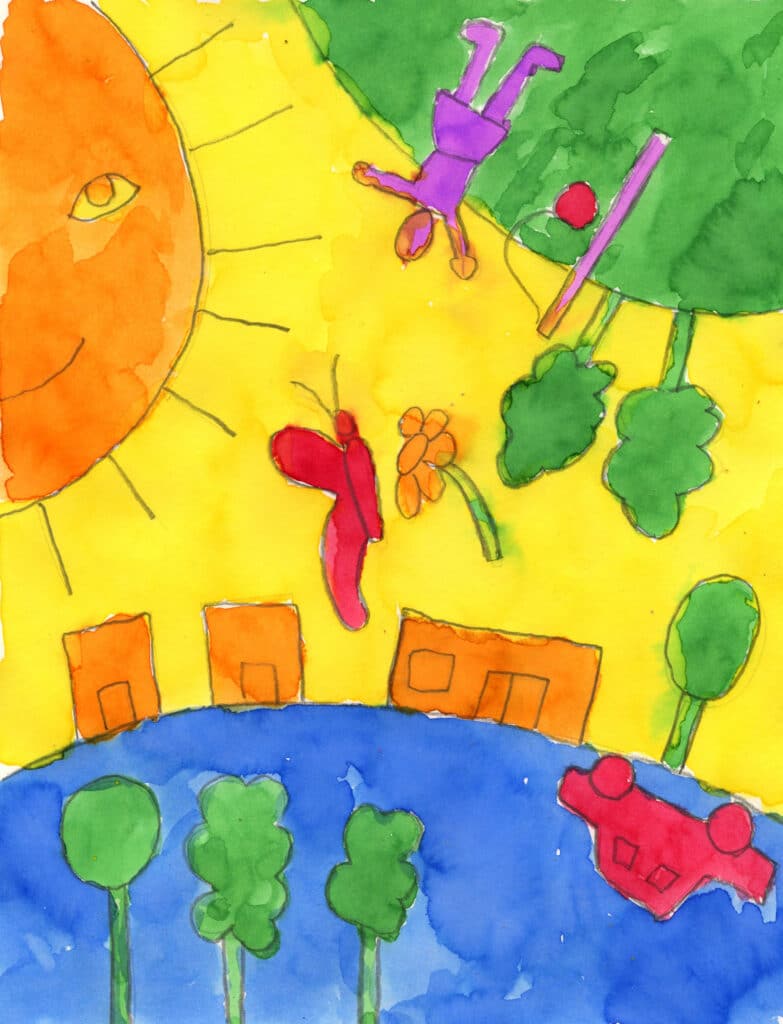
About the artist Marc Chagall
Marc Chagall was born on July 7, 1887, in a small town in Russia called Vitebsk. It was a quiet place with cobblestone streets, wooden houses, and lots of traditions. Marc’s family was Jewish, which means they followed the Jewish religion and celebrated Jewish holidays.
Marc was the oldest of nine children. His father worked in a fish factory where his job was to carry heavy barrels of fish every day. His mother sold groceries in a small shop. They didn’t have a lot of money, but they had love, laughter, and music. Marc often said he remembered the sounds of fiddles and songs from weddings in the street. These happy memories would often appear in some of his many colorful paintings.
Marc was very close to his mother, and she always supported his dreams. When Marc told her he wanted to become an artist, she helped him go to art school — even though it was not easy for Jewish boys living in Russia at that time.
Education and Early Art Lessons
Marc Chagall began taking art lessons when he was a teenager. He first studied with a local artist in Vitebsk, who taught him how to draw and paint. Then, Marc moved to a bigger city called St. Petersburg to go to a real art school. This was a big step, and it wasn’t easy. Jewish people were not always treated kindly in Russia, and Marc had to get special permission to live in the city.
Even though it was hard at first, Marc worked very hard and began to find his own style. He didn’t want to just copy what he saw, he wanted to paint what he felt and imagined. He wanted to show love, memories, dreams, and music in his art. He also wanted to paint scenes from his hometown, like cows walking down the street, people flying through the sky, and musicians playing fiddles at weddings.
Moving to France and Finding Inspiration
When Marc was in his twenties, he moved to Paris, France, the art capital of the world. Paris was full of artists, painters, and sculptors who were trying new ideas and making exciting art. Marc felt like he had entered a magical place where he could be free to create whatever he wanted.
In Paris, Marc saw bold and colorful art styles like Fauvism and Cubism. Fauvism was a style of painting that used very bright colors, like red, green, and blue, in exciting ways. The word “Fauvism” means “wild beasts” in French, because the paintings were so wild and full of color! Marc liked the bright colors of Fauvism, but he used them to tell his own kinds of stories—stories from his past, his dreams, and his heart.
Marc also met many other artists in Paris, such as Pablo Picasso and Henri Matisse. He enjoyed talking with them and learning from them, but he always stayed true to his own unique style. His paintings looked like no one else’s.
Famous Paintings by Marc Chagall
I and the Village (1911)
A dreamlike composition featuring a green-faced man, animals, and village scenes, reflecting Chagall’s memories of his hometown.
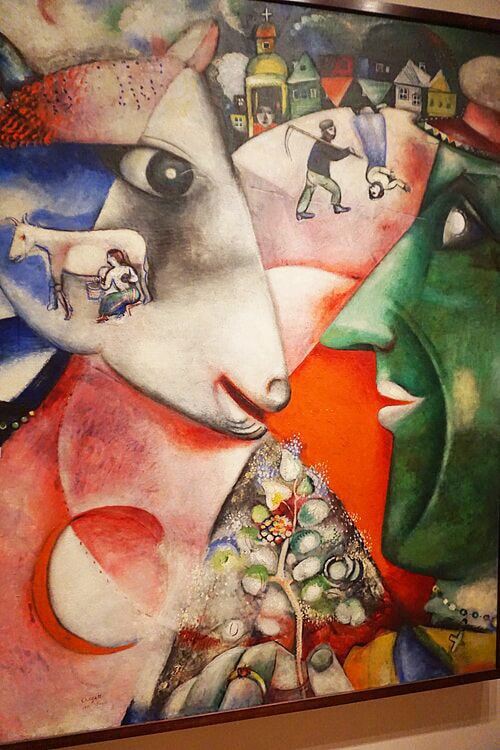
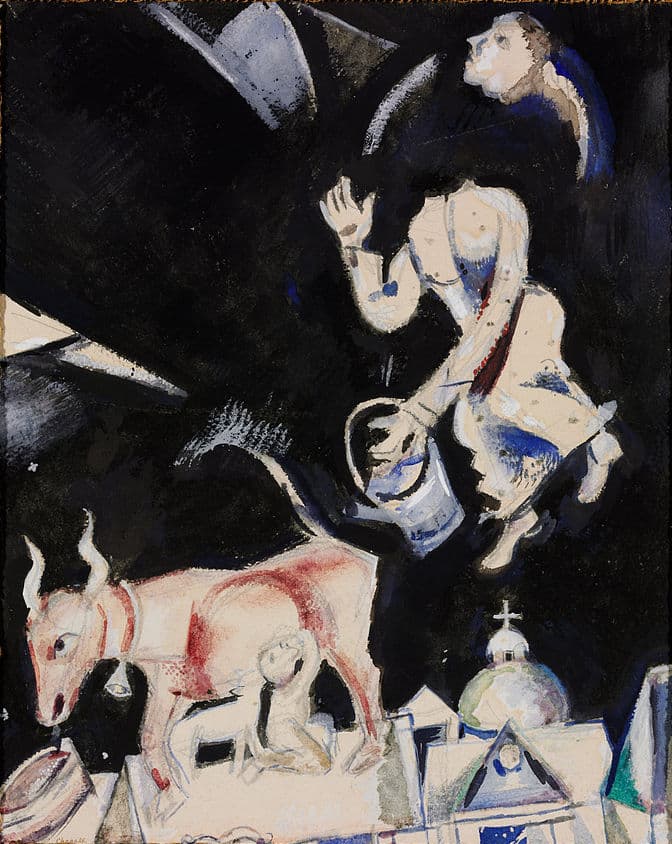
Donkey on the Roof (1911–1912)
A whimsical scene depicting a donkey standing atop a roof, showcasing Chagall’s surrealistic style.
Self-Portrait Seven Fingers (1913)
An introspective self-portrait where Chagall portrays himself with seven fingers on one hand, symbolizing his artistic fervor.
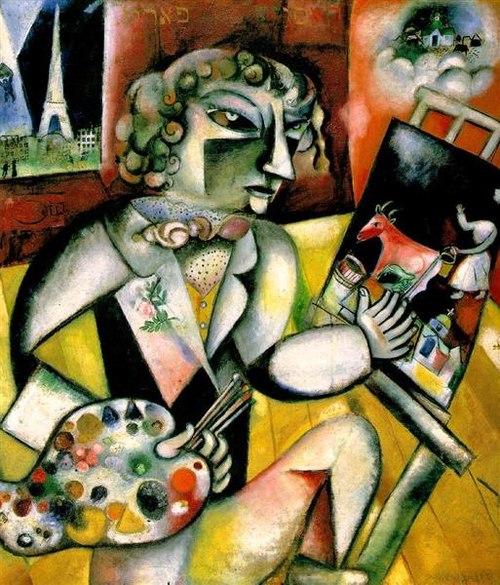
The Birthday (1915)
Depicts Chagall and his fiancée Bella in a loving embrace, with Chagall floating in the air to kiss her, illustrating the joy of love.
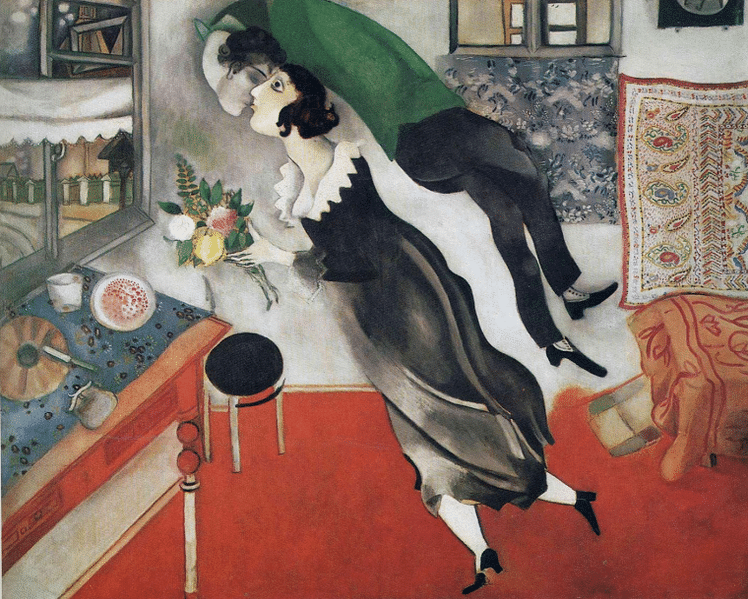
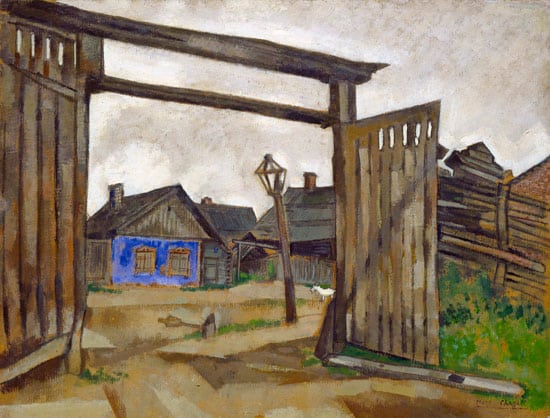
Houses at Vitebsk (1917)
A portrayal of Chagall’s hometown with colorful, abstracted houses, reflecting his connection to his roots.
Back to Russia and World War Times
Marc Chagall went back to Russia in 1914 to visit his family. While he was there, World War I started, and he couldn’t return to France. He stayed in Russia for several years, got married to Bella, and became a famous artist in his home country.
After the war, Marc became the director of an art school in his hometown of Vitebsk. He wanted to teach young artists and help them find their own voices. But things in Russia were changing fast. A new government was in power, and it became harder for artists like Marc to work freely. So, in 1922, he and his family left Russia for good.
Life and Art in France
Marc returned to France and continued to paint. He created illustrations for books, painted beautiful pictures of Paris, and made colorful works full of love and memory. He also began designing for the theater. This was something new for him—and he loved it!
Marc designed stage sets and costumes for ballets and plays. He used his imagination to create magical worlds where dancers flew through the air and bright colors lit up the stage. One of his most famous stage designs was for a ballet called Aleko, which had costumes and backgrounds filled with red horses and flying figures.
Chagall’s Murals and Stained Glass
Later in his life, Marc started making huge works of art for public buildings. These included murals, which are giant paintings on walls, and stained-glass windows for churches and museums. He believed art should be for everyone, not just people in museums.
One of his most famous murals is the ceiling of the Paris Opera House. He painted scenes from famous operas in bright colors, with people floating through the air and instruments glowing in the sky. It was like a giant musical dream painted high above the audience,
He also made beautiful stained-glass windows for places like the United Nations building in New York, the Cathedral in Metz, France, and the Hadassah Medical Center in Israel. These windows glowed with color and showed peaceful, joyful scenes from the Bible and from life.
A Life of Love and Imagination
Marc Chagall loved his wife Bella very much, and she was his inspiration for many paintings. They had a daughter named Ida. When Bella passed away in 1944, Marc was very sad. But he continued to paint, and later in life, he married again and found joy in his art and family once more.
Marc lived a long life, full of love, stories, and imagination. He passed away in 1985 at the age of 97. Today, his paintings can be seen in museums all over the world. They remind us of how powerful dreams, colors, and memories can be.
Russia and France: Two Special Places
Russia and France were both important in Marc Chagall’s life. Russia was where he was born, grew up, and started painting. It was the land of his family, his village, and many of his memories. The snowy rooftops, farm animals, and Jewish traditions of Vitebsk appeared in painting after painting.
France was where he became an artist in the world. In Paris, he met other artists, discovered new styles, and learned that art could be bold and colorful. He painted scenes of lovers walking through Paris, flying through the sky, or dreaming under the stars. He also created big murals and stained glass for people all over the world to enjoy. Both countries gave Marc something special, and he kept both in his heart his whole life.
Fauvism and Chagall’s Colorful Style
Fauvism was an art style that used bright, bold colors and big shapes. It didn’t try to show things exactly how they looked, it showed how they felt. Marc Chagall liked this idea. He painted green faces, blue cows, pink skies, and red people, not because that’s how things look, but because that’s how he wanted to show love, dreams, and memory.
He took the fun and freedom of Fauvism and made it his own. He didn’t follow all the rules, he made his own rules. He painted from the heart.
Why We Remember Marc Chagall
We remember Marc Chagall because he taught us that art can come from our memories, dreams, and imagination. He showed that even simple things, a goat, a fiddle, a house, or a kiss, can be magical when filled with love.
His work makes people smile, think, and wonder. His colors dance across the canvas. His floating people remind us that love can lift us up. His animals and villages help us remember our own homes and families.
Even though he was born more than 100 years ago, Marc Chagall’s art still feels fresh and full of life. Kids and grown-ups alike love his joyful, dream-like paintings.
Marc Chagall’s life shows us that it’s okay to be different. It’s okay to dream, to remember, and to feel deeply. He showed the world that art isn’t just about drawing what you see, it’s about sharing what’s in your heart.
Use the Button below to grab a PDF Tutorial

Step by Step Directions for a Chagall Project
Time needed: 1 hour
How to make a Chagall Drawing
- Make light grid lines. Draw a hill.

- Add simple buildings and a tree.

- Add more trees below.

- Draw part of a large sun.

- Rotate the paper and draw a playground.

- Draw a few trees or building.

- Add a car or vehicle.

- Rotate again and fill in the center.

- Paint with watercolors.



